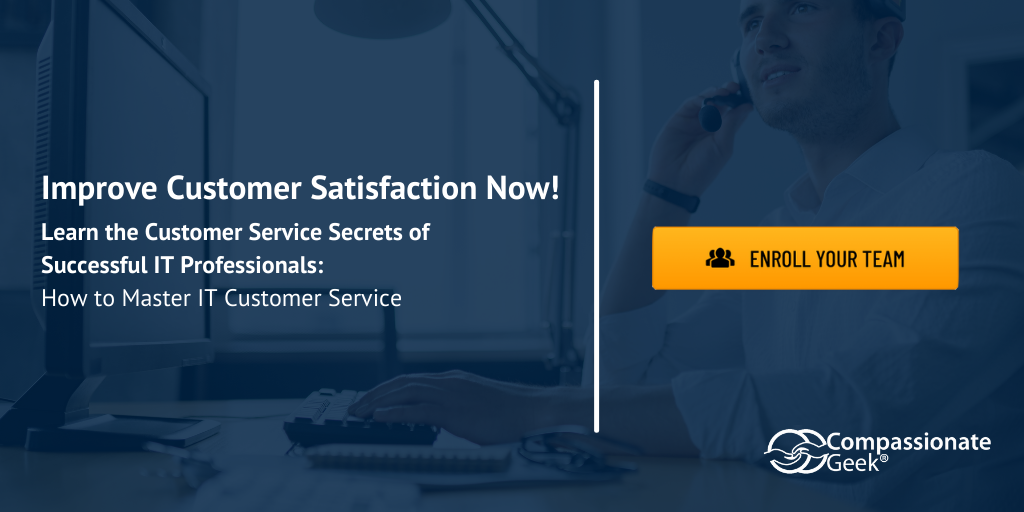Podcast: Play in new window | Download
Subscribe Now Apple Podcasts | RSS
When we ask about the important characteristics of customer service providers, IT or otherwise, one of the most common answers is patience. People who are receiving customer service want the provider to be patient. Similarly, one of the most common complaints is that customer service providers aren’t patient with end-users and other customers. In this post, you’ll learn what it means to be patient.
Hey, it’s perfectly understandable that you might run out of patience when you’ve heard the same problem many times before and the solution seems so simple to you, but not to your user. Remember, however, that it may be the first time dealing with that issue for your customer and they want you to fix the issue and acknowledge the emotions they’re experiencing as a result it.
So, how can you develop more patience?
Patience starts with empathy. Try to put yourself in the position of your customer. Imagine how you would feel and what you would want if you were them. Recall a time when you were frustrated with a product and needed help. Think about what you wanted at that time. Recall the customer service heroes and how they treated you during the process.
Recognize that no one is an expert on everything. You may be an expert on computers and digital systems, but not on medicine. Remember the time your doctor was patient with you while you asked questions and struggled to understand what was happening with your body. Conversely, your end-user may be an expert on medicine, but clueless about computer systems. Our jobs in IT are to help our end-users do their jobs more productively, efficiently, and creatively and to find ways to help them in spite of their lack of knowledge.
Relax. Take a deep breath (but don’t let your user hear that!). Obviously, if you work in a call center where you’re evaluated based on the number of calls you handle and your time on each call, you need to keep things moving, but you can still work to maintain your calm. Some activities that can help you maintain your calm, even in pressure-cooker situations, are yoga and meditation. If neither of those tools sounds like something you’d like, consider working on mindfulness.
Keep the conversation on track. Sure, some customers like to chit-chat and that can be time-consuming. When that happens, offer a quick acknowledgment, then say something like, “Let’s focus on getting you back up and running.” and then take the necessary steps to resolve the issue. If the end-user keeps trying to engage in distracting small talk, you can say, “Do you mind if I put you on hold for a moment while I work on this?” Then, put them on hold and work on the issue. Be polite when you do that and be careful not to leave them on hold for so long that they think you forgot them. Remember how you’d feel if that happened to you.
The key to developing more patience with other people starts with empathy. Put yourself in the other person’s position, then remember that no one is an expert on everything and your end-user is counting on you to be an expert on computer systems so they don’t have to be. Next, relax. Learn how to calm yourself. Finally, remember to keep conversations on track. If necessary, you can try putting the customer on hold momentarily while you work on the problem.
Next Level Customer Service Training
Enroll your team now in Compassionate Geek IT customer service training so they can work together, get things done, and take care of customers.




